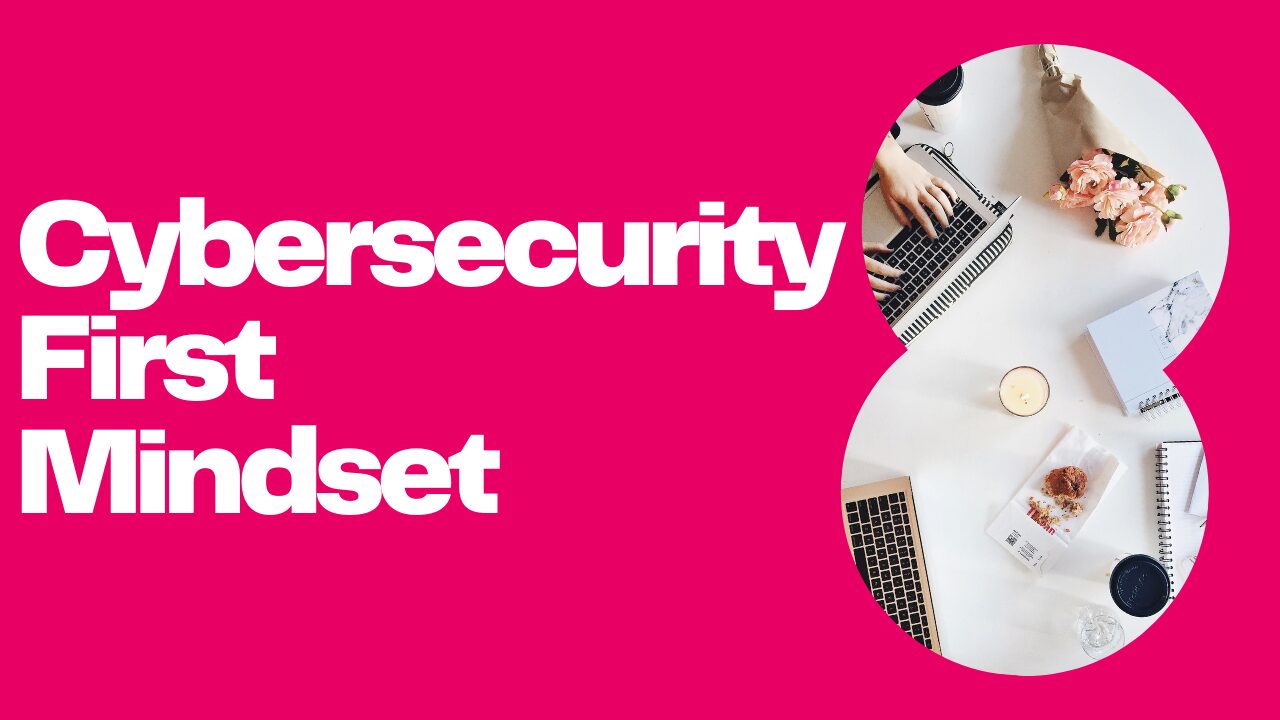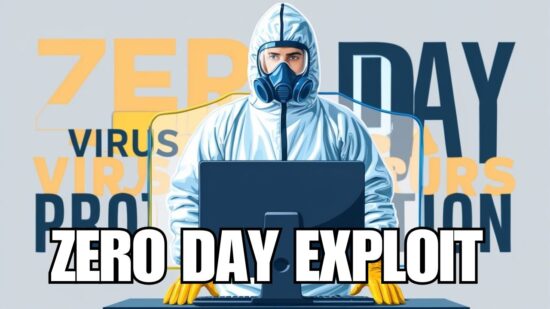Is Your Cybersecurity First Mindset Boosting Your Organization’s Resilience?
In today’s digital world, an organization’s cybersecurity plays a crucial role in its survival and success. Prioritizing cybersecurity protects valuable assets and sensitive information, and fosters trust with clients and partners. To fully reap the benefits of a cybersecurity-first mindset, it is important to embed it within the organization’s culture, seamlessly integrating it with existing processes and values.
A strong cybersecurity culture empowers every employee to take ownership of their responsibilities concerning data protection and digital safety. It encourages collaboration and communication, bridging departmental barriers and fostering a proactive approach to dealing with potential threats. A cybersecurity-first mindset becomes a cultural asset to the organization when ingrained into daily operations and becomes an integral part of the company’s core values.
Key Takeaways
- A cybersecurity-first mindset enhances an organization’s ability to protect its assets and fosters stakeholder trust.
- Embedding cybersecurity in the organizational culture empowers employees, encourages collaboration, and reinforces proactive behavior.
- A cybersecurity-first mindset becomes a valuable cultural asset when integrated with the organization’s core values.
The Importance of a Cybersecurity-First Mindset
Defining a Cybersecurity-First Mindset
A cybersecurity-first mindset refers to ingraining security-centric thinking into every aspect of an organization. This includes policies, processes, and employee behavior. By embracing this mindset, we can significantly reduce risks and improve the overall security posture of our organization.
Some key aspects of a cybersecurity-first mindset include:
- Proactive defense: Continuously monitoring and assessing potential threats to take preventive action.
- Regular updates: Ensuring software and hardware are consistently updated to mitigate vulnerabilities.
- Employee education: Providing training and resources to employees to keep them informed about the latest cybersecurity trends and best practices.
- Multi-layered security approach: Implementing multiple security measures, like firewalls, intrusion detection systems, and encryption, to create a robust defense mechanism.
Historical Evolution of Cybersecurity Prioritization
The prioritization of cybersecurity has evolved significantly over the years. In the past, organizations primarily focused on safeguarding their physical assets. Security measures mainly involved locking doors, installing surveillance systems, and protective barriers. With rapid technological advancements, the focus shifted to securing digital information systems.
The growth of the internet and the digital landscape led to new cyber threats and challenges. Some key events in the evolution of cybersecurity include:
- Late 1980s – Early 1990s – The emergence of computer viruses and worms motivated an initial focus on antivirus software and tools.
- Late 1990s – Early 2000s – The rise of e-commerce platforms highlights the need for secure online transactions and encryption.
- Mid-2000s – Early 2010s – Growing dependency on internet infrastructure leads to increased concerns about securing sensitive information, network communication, and user privacy.
- Mid-2010s – Present – The explosion of internet-connected devices and cloud computing demands a more comprehensive and robust cybersecurity strategy.
The history of cybersecurity demonstrates that threats continuously evolve, and our approach to security must evolve with them. Adopting a cybersecurity-first mindset ensures our organization is better prepared and equipped to face the ever-changing landscape of cyber threats.

Organizational Culture and Cybersecurity
Characteristics of a Security-Centric Culture
A security-centric culture is one where cybersecurity is ingrained in every organization’s operations. In such an environment, employees consider the security implications of their actions, whether sharing sensitive files or clicking on suspicious links.
The following attributes are commonly found in organizations that prioritize cybersecurity:
- Employee awareness: Training programs and regular updates are provided to all staff members, helping them understand and adhere to security policies.
- Proactive risk management: Organizations invest in technologies and processes that identify and mitigate potential cyber threats before they lead to breaches.
- Management support: Leadership recognizes cybersecurity as a top priority and allocates adequate resources and support to establish and maintain a secure environment.
- Information sharing: Open communication channels exist among various teams, encouraging transparency and collaboration in addressing and preventing cyber incidents.
- Continuous improvement: Ongoing assessments identify weaknesses and opportunities for enhancing security measures, ensuring the organization stays ahead of evolving threats.
Integrating Cybersecurity into Company Values
To build a robust cybersecurity culture, it’s essential to integrate security principles into an organization’s core values. Here are a few steps to achieve this:
- Establish a clear vision: Clearly articulate the importance of cybersecurity in the overall success and longevity of the business. This vision should be consistently communicated to all employees.
- Lead by example: Promote cybersecurity awareness and best practices among top management, as their actions significantly influence the mindset of other employees.
- Align security and business objectives: Ensure cybersecurity goals are integrated into the organization’s overall strategy, making them essential to decision-making processes.
- Reward and recognize: Encourage a security-conscious mindset by recognizing and rewarding employees who demonstrate exceptional security awareness, behavior, and policy adherence.
- Adapt and evolve: Regularly review and update security policies, procedures, and technologies based on feedback, industry advancements, and lessons learned from previous incidents.
By fostering an environment where cybersecurity is deeply embedded in organizational values and processes, businesses can significantly reduce their risk of cyberattacks and protect their valuable assets.
Impact on Business Operations
Boosting Customer Trust
In today’s digital age, consumers are becoming increasingly concerned about the security of their data. By adopting a cybersecurity-first mindset, we can demonstrate to our customers that their information is well-protected, ultimately boosting their trust in our organization. Customers who observe our commitment to protecting their data are likelier to choose us over a competitor lacking a strong security culture. Fostering a cyber-secure environment is essential for maintaining customer satisfaction and loyalty.
Some effective ways to achieve this include:
- Implementing robust security architectures
- Conducting regular security assessments
- Providing employee training on the latest cyber threats and best practices to protect customer data
Protecting Intellectual Property
In addition to customer data, a cybersecurity-first mindset is crucial for safeguarding our organization’s intellectual property (IP). Protecting our IP is essential for maintaining our competitive edge and preventing unauthorized access to critical business information.
We can take several steps to ensure the security of our intellectual property:
- Implement access controls: Restricting access to sensitive information on a need-to-know basis reduces the risk of unauthorized access.
- Regular security audits: Assessing and evaluating our organization’s security practices helps identify potential vulnerabilities and ensure the necessary controls are in place.
- Encrypting data: Encrypting sensitive data, both in transit and at rest, adds an extra layer of security to our IP.
- Employing intrusion detection and prevention systems: Monitoring our networks for signs of breaches allows us to act quickly in the event of a cyber attack.
By following these best practices, we can maintain a strong security culture that protects our intellectual property and contributes to our organization’s success.
Employee Role in Cybersecurity Culture
Training and Awareness Programs
As an organization, we recognize the importance of having well-informed employees equipped with the knowledge and skills to protect our digital assets. Therefore, we invest time and resources in training and awareness programs to ensure our employees stay updated on the latest cybersecurity trends, threats, and best practices.
Our training programs follow a structured approach, focusing on different aspects of cybersecurity, such as phishing awareness, password management, and secure software development practices. Additionally, we regularly share updates through internal newsletters and bulletins. This allows us to create a culture where employees can recognize potential cyber threats and respond appropriately.
Encouraging Proactive Security Behaviors
Another key aspect of our cybersecurity-first culture is encouraging employees to adopt proactive security behaviors. This means actively promoting responsibility and individual ownership when protecting organizational data and systems.
We aim to achieve this through:
- Incentives and rewards: Recognizing employees who demonstrate exceptional security practices and contribute to improving our cybersecurity posture.
- Gamification: Utilizing competitions and simulations, such as capture-the-flag (CTF), to promote engagement and learning in a fun, interactive environment.
- Feedback channels: Establish open communication lines for employees to report potential security concerns, vulnerabilities, or incidents without fear of retribution.
By actively promoting a cybersecurity-first mindset and fostering a culture where employees understand their role in protecting the organization, we can collectively strengthen our defenses against cyber threats and safeguard our valuable assets.
Strategic Advantages of Cybersecurity as a Cultural Asset
Incorporating a cybersecurity-first mindset into our organization’s culture is a strategic asset in several ways. By establishing a strong cybersecurity culture, we can offer numerous benefits to our organization, including gaining a competitive edge in the market and achieving long-term cost savings.
Competitive Edge in the Market
Embracing a cybersecurity-first culture demonstrates our commitment to protecting our valuable data and the trust of our clients and stakeholders. This positions our organization as a forward-thinking leader in the industry. Furthermore, integrating cybersecurity best practices into our daily processes helps mitigate risks, enhancing our reputation as a trustworthy and secure partner.
As cyber threats evolve, our ongoing commitment to cybersecurity culture ensures that our employees are informed and engaged with the latest security measures. This, in turn, empowers us to:
- Adapt swiftly to emerging threats
- Reduce potential downtime due to breaches
- Securely manage our growing digital footprint
A strong cybersecurity culture differentiates our organization, attracting potential clients and partners who prioritize data protection and security.
Long-Term Cost Savings
Investing in cybersecurity by fostering a culturally ingrained mindset focused on cyber resilience yields substantial long-term cost savings. By embedding cybersecurity practices within our daily routines, we can minimize the likelihood of costly data breaches and their associated consequences, such as fines, reputational damage, and potential litigation.
Some cost-saving measures derived from a cybersecurity-first mindset include:
- Regular employee training reduces the risk of human error
- Implementing multi-factor authentication, reducing unauthorized access
- Routine audits and risk assessment, allowing for proactive measures
These efforts not only safeguard our critical assets but also contribute to the overall financial stability of our organization. By maintaining a cybersecurity culture, we can continuously refine our practices and adapt to the evolving cyber landscape, protecting our valuable resources and ensuring long-term cost savings.
Challenges and Considerations
This section will discuss some key challenges and considerations when adopting a cybersecurity-first mindset as a cultural asset within your organization.
Balancing Security with Usability
One of the primary challenges of integrating a cybersecurity-first mindset into organizational culture is achieving a balance between security and usability. As an organization, we must foster a secure environment without hindering the productivity of our workforce. To achieve this, we need to:
- Implement security measures designed to be unintrusive, flexible, and robust enough to protect against potential threats.
- Provide training and guidance for employees so they understand how to comply with security policies in a manner that doesn’t impede their daily work tasks.
- Regularly review and update our policies and protocols to ensure they remain relevant, considering user feedback to enhance the overall user experience.
Adapting to Evolving Threat Landscapes
Another important consideration when building a cybersecurity-first culture within your organization is the ever-changing landscape of cyber threats. To stay ahead of emerging risks, we must:
- Stay informed about the latest cybersecurity and cyber threat trends, leveraging reliable sources of information.
- Invest in ongoing employee education to ensure our workforce is up-to-date on relevant evolutions in the cyber landscape.
- Conduct routine assessments of our organization’s security posture, identifying and addressing vulnerabilities proactively.
- Collaborate with experts, vendors, and partners in the cybersecurity industry to gain insights into best practices, innovative solutions, and shared knowledge.
By considering these factors when building a cybersecurity-first culture within your organization, we can reap the benefits of enhanced security while navigating the challenges of the dynamic nature of cyber threats and user expectations.
Implementation Strategies
Leadership Buy-In and Support
One of the key aspects of fostering a cybersecurity-first mindset within an organization is obtaining leadership buy-in and support. This starts with the executive team communicating, modeling, and encouraging best practice behaviors that lead to desired outcomes for all stakeholders, such as employees, customers, prospects, and partners. As a result, this helps to build a culture that prioritizes security at all levels of the organization.
- Visibility and communication: Top management should be vocal about its importance and commitment to cybersecurity, setting clear expectations for every team member.
- Education and training: Ensure executives and team leaders are well informed about the latest cyber threats and best practices to mitigate them, as this knowledge will cascade to employees.
- Performance metrics: Establish measurable security objectives and align them with organizational goals, enabling leaders to track progress and make informed decisions.
Continuous Improvement and Adaptation
Fostering a culture of cybersecurity requires continuous improvement and adaptation. The cyber landscape constantly evolves; thus, an organization’s cybersecurity strategy must be proactive, effective, and ever-evolving.
- Awareness initiatives: Regularly run campaigns and training programs to educate employees about the latest cyber threats, prevention measures, and best practices.
- Technology updates: Keep pace with the latest security solutions and technologies, which can help to protect your organization against evolving cyber threats.
- Incident response: Develop and constantly update a comprehensive incident response plan with procedures to detect, respond, and recover from a security breach.
- Feedback and improvement: Periodically review your cybersecurity initiatives, gathering feedback from team members and assessing their effectiveness. Use the insights gained to make improvements and foster a stronger security culture.
We aim to create a cybersecurity-first mindset within our organization by implementing these strategies. This approach serves as a cultural asset that protects our valuable data and resources and instills confidence in our stakeholders, ultimately contributing to the success and resilience of our organization.
Measuring the Effectiveness of a Cybersecurity-First Culture
Implementing a cybersecurity-first mindset in your organization is crucial to safeguard your digital assets and prevent cyberattacks. However, measuring the effectiveness of this cultural shift is equally important to ensure continuous improvement and your organization’s success. In this section, we will discuss two critical components to evaluate the effectiveness of your cybersecurity-first mindset: Key Performance Indicators and Regular Security Audits and Assessments.
Key Performance Indicators
Key Performance Indicators (KPIs) are essential in measuring the success of your cybersecurity-first culture. By tracking these KPIs, we can better understand the progress and effectiveness of our cybersecurity program. Here are some KPIs that can help you assess the impact of a cybersecurity-first mindset in your organization:
- Phishing Incident Rate: The number of employees who report phishing incidents or click on malicious links. A decrease in this rate indicates an increased awareness of cybersecurity practices.
- Training Completion Rate: The percentage of employees who complete cybersecurity training and awareness programs. High completion rates demonstrate a strong commitment to cybersecurity education.
- Incident Response Time: The time it takes to detect, contain, and remediate security incidents. A shorter response time indicates a more efficient and prepared cybersecurity team.
Regular Security Audits and Assessments
In addition to KPIs, regular security audits and assessments play a crucial role in ensuring the effectiveness of your cybersecurity-first culture. These assessments allow us to identify potential weaknesses and gaps in our security posture.
- Vulnerability Scans: Regular vulnerability scans help identify and fix potential security weaknesses before cybercriminals can exploit them.
- Penetration Testing: This proactive measure involves simulating a cyberattack on your organization to identify potential weaknesses in your defenses and test the effectiveness of your security controls.
- Security Policy Compliance: Regularly reviewing and updating your organization’s security policies ensures that employees know and adhere to current best practices.
By implementing a robust system of Key Performance Indicators and conducting regular security audits and assessments, we can measure the effectiveness of our cybersecurity-first culture and continuously improve our security posture. These practices help us stay one step ahead of cyber threats and allow us to protect our organization’s digital assets more effectively.
Case Studies and Industry Examples
This section’ll discuss a few case studies and industry examples that illustrate the importance of embracing a cybersecurity-first mindset as a cultural asset within an organization.
Example 1: IBM – IBM is a renowned organization that has successfully adopted a cybersecurity-first mindset and created a culture of security. They conducted a Cyber Day for Girls campaign, engaging female students in discussions about cybersecurity careers and fostering a passion for cybersecurity among the younger generation. This initiative demonstrates IBM’s commitment to cybersecurity as a cultural asset that spans multiple generations and encourages diversity in the field.
Example 2: Google – Google is known for its culture of innovation and for its focus on security. They have implemented the concept of “Security Keys”, which are physical keys used for two-step authentication, to minimize the risk of phishing or unauthorized access. This practice shows Google’s dedication to strengthening its security culture by adding an additional layer of protection.
Some other implementations that can be adopted by organizations are:
- Regular cybersecurity training to educate employees on the importance of security practices and how to identify potential threats.
- Emphasizing the significance of data privacy and ensuring employees know the consequences of mishandling sensitive information.
- Encouraging a communication culture where employees are encouraged to report suspicious activities without fear of backlash.
Organizations might have different strategies and approaches based on their industry and specific needs. However, the key takeaway is embedding cybersecurity within the organization’s culture to promote awareness and reduce the risk of security breaches. Adopting a cybersecurity-first mindset as a cultural asset will prepare organizations to fend off potential threats and maintain a strong security posture.
Conclusion
In today’s digital landscape, it has become imperative for organizations to adopt a cybersecurity-first mindset to protect their data, assets, and reputation. By embedding cybersecurity into the core of our organizational culture, we acknowledge its importance and ensure that every employee is aware, engaged, and plays an active role in safeguarding our organization.
Our focus on cybersecurity should be an extension of our core values and business strategy. A strong cybersecurity culture entails clear communication about every individual within the organization’s expectations, processes, and responsibilities. Successfully implementing this mindset starts at the top, with the leadership constantly emphasizing the importance of cybersecurity to its employees.
We can build a robust cybersecurity culture by:
- Providing regular training sessions to ensure all employees are updated on the latest threats and best practices.
- Implementing clear policies that are enforced consistently.
- Establishing a positive security atmosphere where employees feel comfortable reporting vulnerabilities or incidents without fear of retribution.
By instilling a cybersecurity-first mindset within our organization, we are not only mitigating risks of potential breaches but also fostering a culture of transparency and accountability for all team members. This cultural asset can significantly contribute to our organization’s overall success, effectiveness, and resilience in the ever-evolving digital world.






